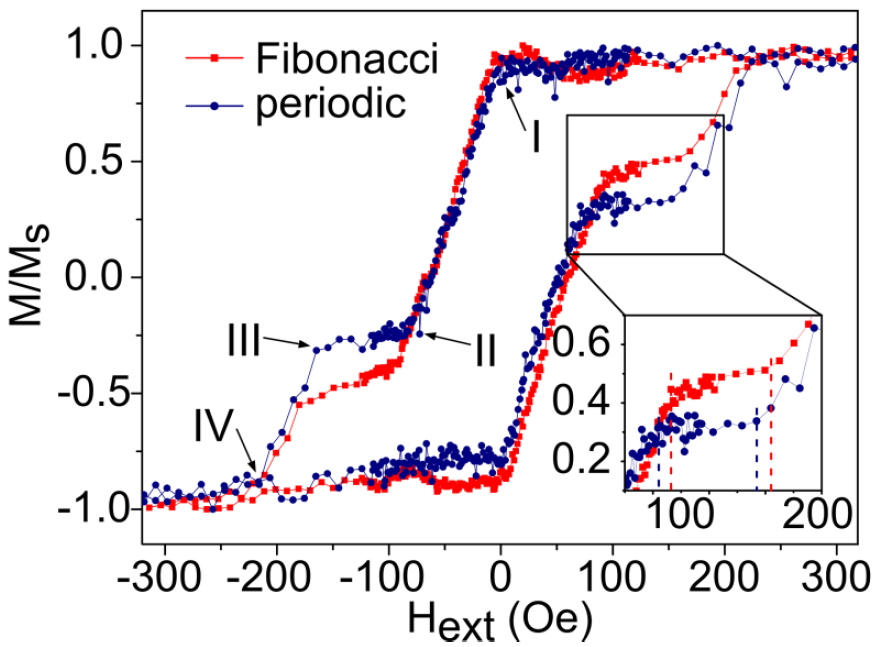K. Szulc, F. Lisiecki, A. Makarov, M. Zelent, P. Kuświk, H. Głowiśski, J. W. Kłos, M. Münzenberg, R. Gieniusz, J. Dubowik, F. Stobiecki and M. Krawczyk
Phys. Rev. B 99, 064412 (2019)
We investigate experimentally and theoretically the magnetization reversal process in one-dimensional magnonic structures composed of permalloy nanostripes of the two different widths and finite length arranged in a periodic and quasiperiodic order. We showed that dipolar coupling between rectangular nanostripes is significantly reduced as compared to the analytical and numerical predictions, probably due to formation of the closure domains at the nanostripe ends. Although the main feature of the hysteresis loop is determined by different shape anisotropies of the component elements and the dipolar interactions between them, the quasiperiodic order influences the hysteresis loop by introducing additional tiny switching steps and change of the plateau width. We also showed that the dipolar interactions between nanostripes forming a ribbon can be counterintuitively decreased by reduction of the distance between the neighboring ribbons..

Fig.1. Comparison of the hysteresis loops measured with LMOKE for Fibonacci and PS array of NSs of 5 μm length, 50 nm thickness, and 10 μm separation between the ribbons. Vertical dashed lines in the inset mark the beginning and the end of the plateau. The labels I and II (III and IV) are related to switching of the wide (narrow) NSs.

